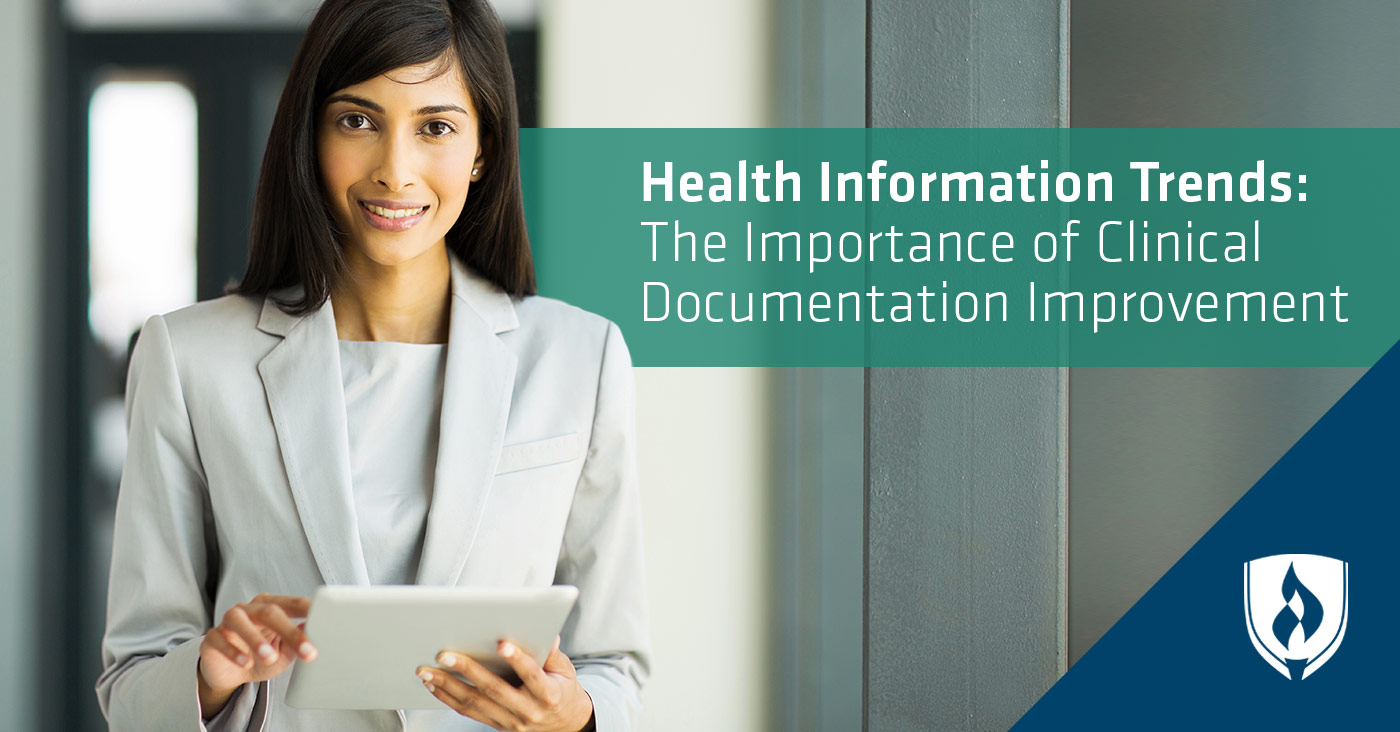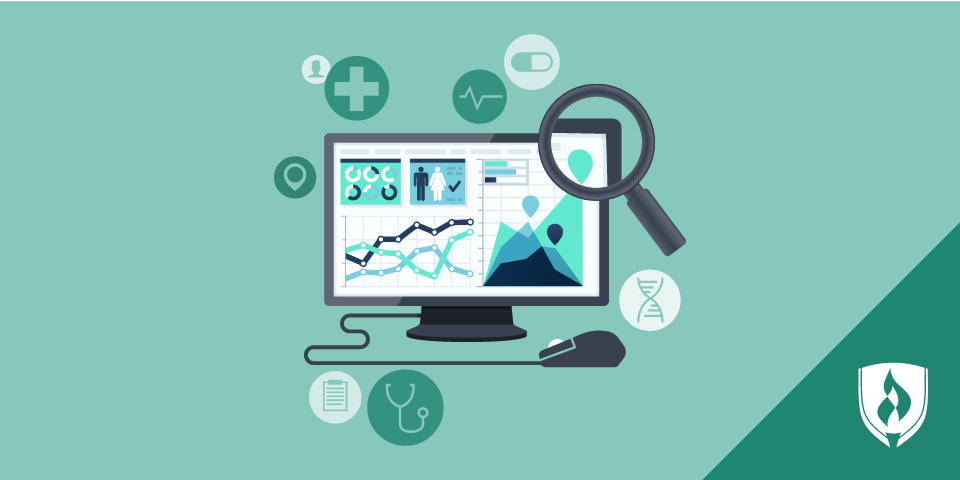Health Information Trends: The Importance of Clinical Documentation Improvement
By Megan Ruesink on 11/21/2016

As an aspiring professional in the heath information technology/management (HIT/HIM) field, you know that accuracy and integrity are of the upmost importance in your work. So, when you hear about clinical documentation improvement (CDI), you know it’s something you need to stay on top of — both for your own professional development and for your credibility.
Instead of scouring the web for bits and pieces of information about clinical documentation improvement, here’s your chance to get the whole picture in one place. Take a few moments to learn from CDI insiders, get a bearing on CDI basics and start to explore how this growing trend will affect your future career.
The basics of CDI
CDI is an evolution of CD (that is, clinical documentation) that has been led by people like yourself who make it their career to document and code the services patients receive. As its title suggests, CDI is a focused effort to improve clinical documentation by ensuring accuracy, and, ultimately, correct billing procedures.
CDI is “an enhancement process that focuses on written documentation so that it accurately and completely reflects the clinical care provided to the patient,” says Denise Van Fleet, a registered health information administrator and HIM program coordinator for Rasmussen College.
Why CDI matters
At this point, you’re probably asking yourself, “Hasn’t accurate documentation always been important?” The answer is invariably yes. However, in the last few years, some major changes in how hospitals are billed have pushed CDI to the forefront of healthcare conversations. Check out a few reasons why CDI has the spotlight.
Overpayments and underpayments are a huge problem
The Recovery Audit Program resulted in more than $990 million in overpayments being returned to the Medicare Trust Fund and almost $38 million in underpayments returned to healthcare providers in just three years (2005-2008), according to the U.S. Centers for Medicare and Medicaid Services. Due to these astounding discrepancies, Congress instituted a permanent, nationwide Recovery Audit Program.
CDI affects a hospital’s bottom line
“Healthcare is rapidly transforming from a fee-for-service to a pay-for-performance payment system that relies heavily on clinical documentation to support payment. Whereas in the past, providers were predominately reimbursed based on volume of services, now the focus is on the quality of services provided and the accuracy of the documentation of those services,” says Ben Sayabovorn, manager of training and education at Provident Consulting.
Patients’ bills are also affected by correct documentation
Correct documentation is not only important for hospital reimbursement, but also for ensuring that patients’ bills are accurate as well. “Clinical documentation improvement and billing specialists help ensure hospitals, physician practices, and patients are correctly billed for care provided,” says Sayabovorn.
Nothing is more frustrating than getting home from the grocery store to discover your receipt says you were incorrectly billed for something you purchased. Now imagine that frustration amplified to a level where hundreds, if not thousands, of dollars are at stake. Patients deserve to be billed correctly for the services and procedures they receive, just as providers and facilities deserve to be paid correctly for their hard work.
CDI helps promote accuracy — which is important for patient care
The need to have complete, accurate documentation is significant to a patient for continuing care — patient safety especially,” says Van Fleet. “Poor documentation that is completed in a hurried fashion will not lend itself to continuing care by other providers.” VanFleet uses the example of a patient with a pre-existing heart problem and a pacemaker. Imagine if that patient goes on vacation and acquires a traumatic injury. In such an event, the hospital attending to this patient will need accurate, complete documentation about the patient’s history, her pacemaker, and more in order to proceed in a safe and beneficial manner.
What you need to know about CDI
There is high demand for professionals with CDI experience
There is already significant opportunity for qualified professionals in this field, but familiarity with CDI can help you become an even more attractive candidate. “There is an ever-increasing need for HIM/HIT professionals to meet the challenges of the changing environment,” Sayabovorn says. “They will be more desirable candidates if they have CDI knowledge and experience.”
There are specific CDI programs and credentials available
Special CDI courses and credentials are available for those who want to set themselves apart or who have specific interest in expanding their knowledge.
CDI starts with recognition
If you are able to recognize so-called clinical indicators — that is, the quantifiable aspects of patient care — then that is the first step toward good documentation, according to VanFleet.
“It is very important for an HIT or HIM graduate to understand pharmacology, anatomy, physiology and health science so that clinical indicators in lab reports, radiology reports and in medication administration sheets can be recognized,” VanFleet explains.
Reimbursement is directly affected by CDI
This fact is so important it’s worth mentioning again: CDI directly affects reimbursement. It’s amazing how a few little letters, or an incorrect code here or there can make a difference of thousands of dollars.
“Poor documentation can result in diminished payments, even if high-quality care is provided,” says Sayabovorn.
Keeping up with other HIT trends
Now that you’ve taken a good, in-depth look at clinical documentation improvement, you’re in the loop on one of the most talked about subjects in the field. To keep up with other health information trends, check out our article: 10 HIT Blogs Worth Following.
RELATED ARTICLES:




